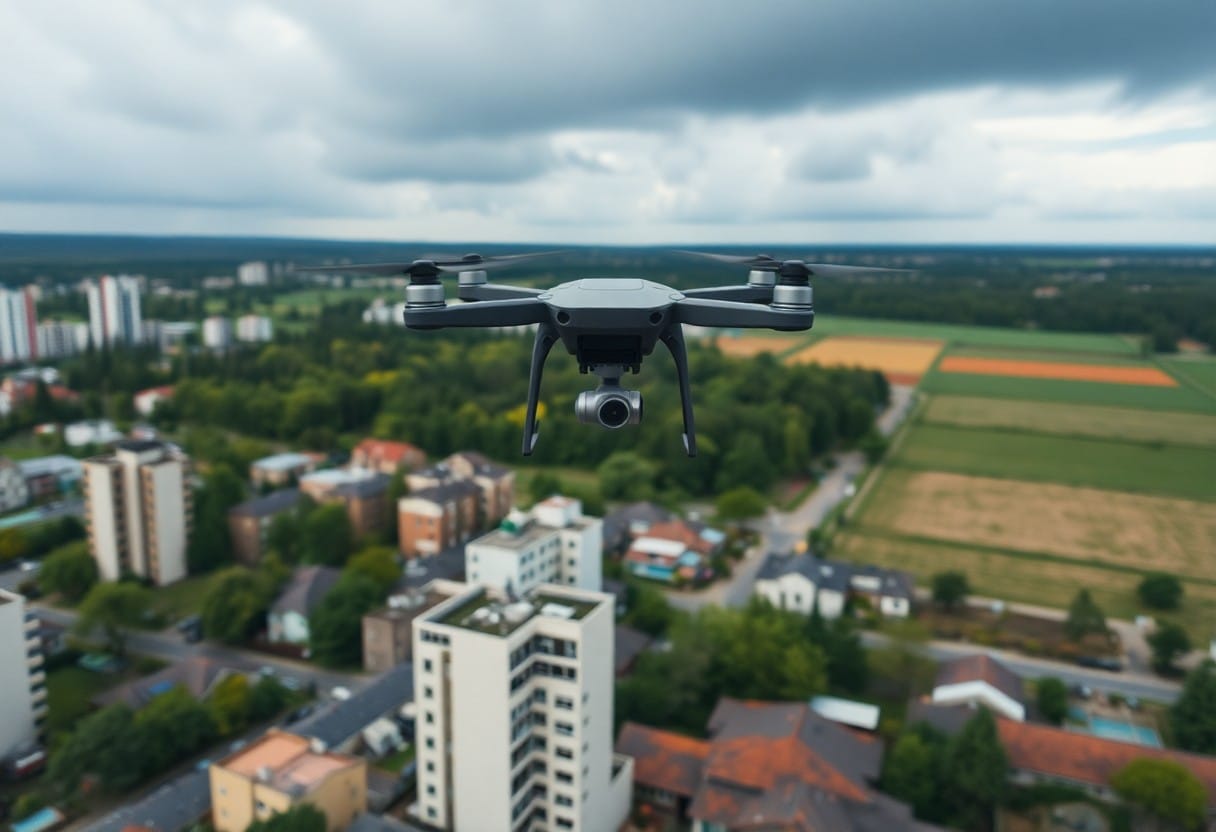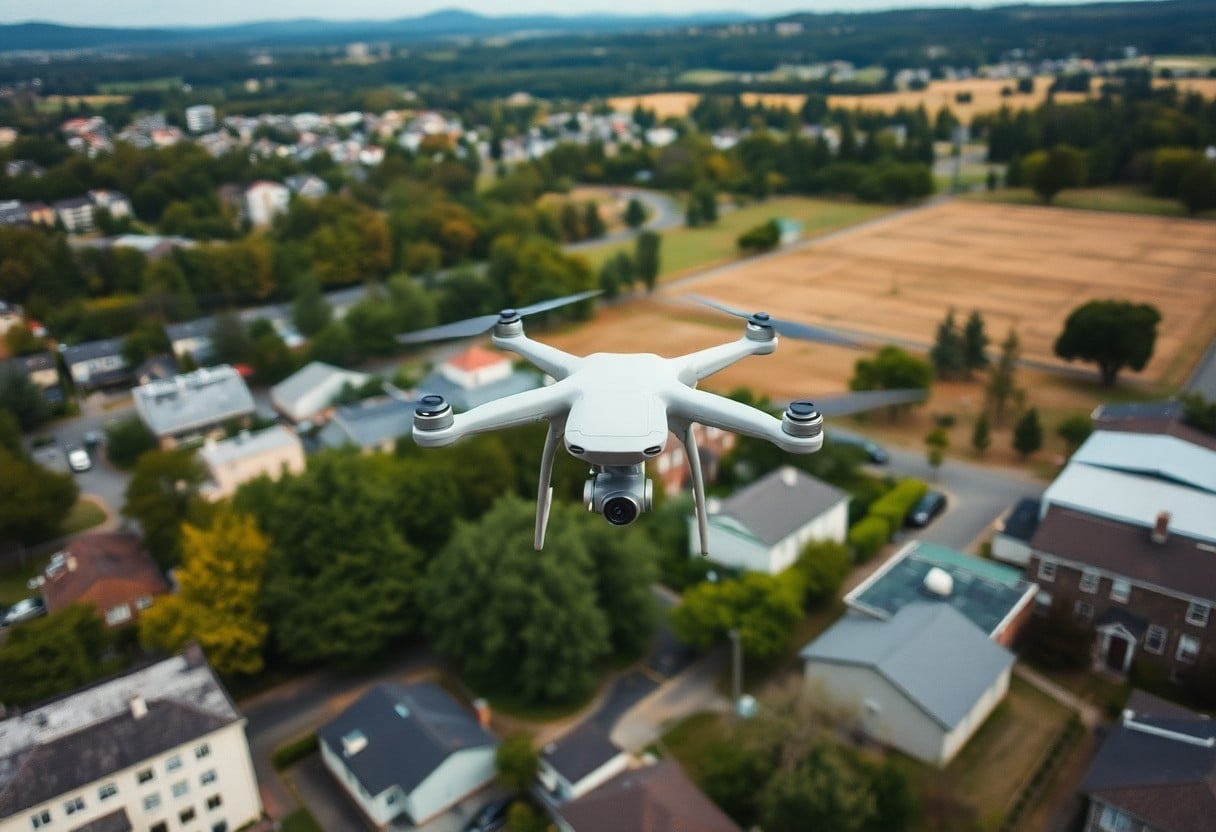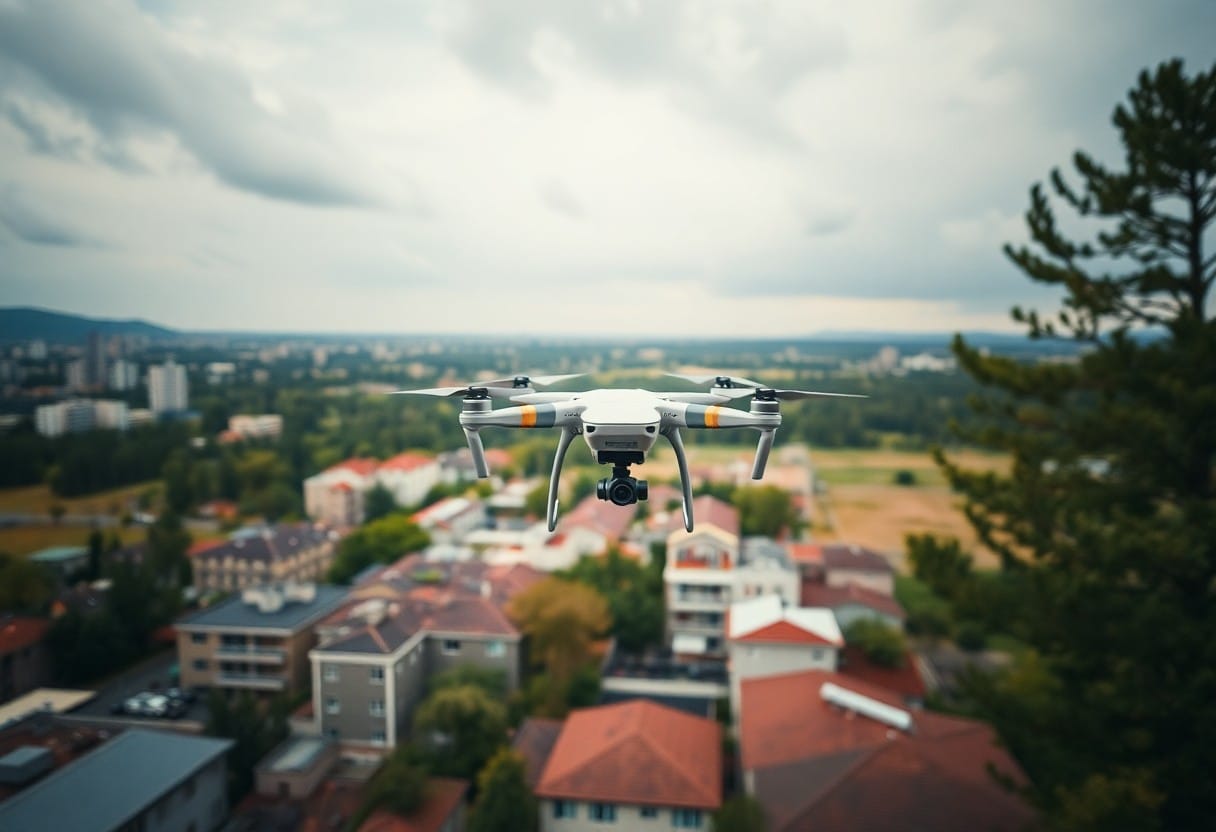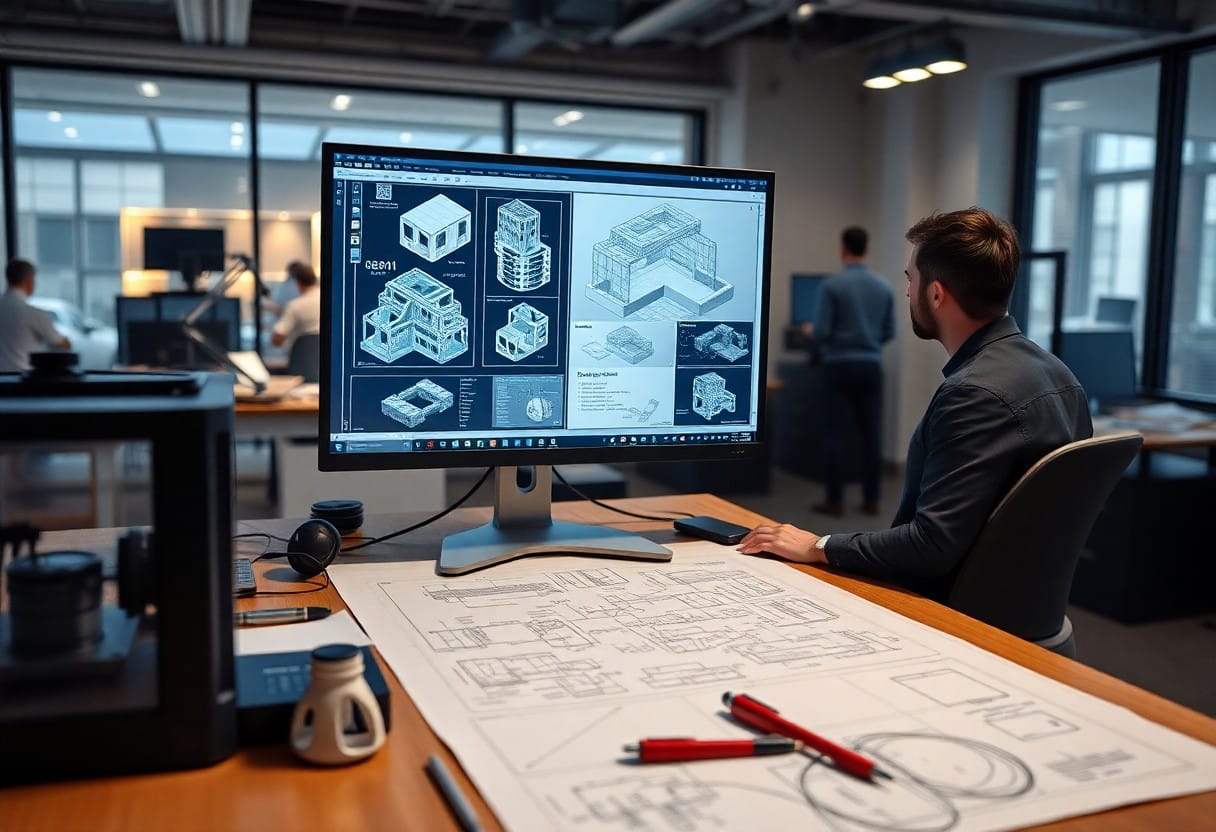What factors affect your drone environment?
Choosing the right environment is crucial when operating a drone. Some of the factors you need to consider includeWeather conditions,airspace limitationsrespond in singingSurrounding StaffThe safety of drone flights. Adverse weather may affect the stability of the drone, while busy airspace may pose a risk of collision. Additionally, make sure your surroundings are safe so that you don't endanger others. By recognizing these influences, you can enjoy drone operations more safely.

Key Points:
- Meteorological conditions: Be aware of wind speed, rainfall and temperature to ensure safe flying.
- air transportation: Evaluate how busy the local airspace is to avoid conflicts with other aircraft.
- topographical: Consider the terrain of the operating environment, such as obstacles like mountains and tall buildings.
- Regulatory Compliance: Understand and follow local drone laws and regulations.
- Battery Life: Ensure that the batteries are sufficient to avoid the dangers caused by insufficient power.
- Operator Experience: Evaluate operator skills and experience to ensure safe flight.
- Targeted Uses: Develop the operating environment according to the use of the drone, e.g. photography, inspection, etc.
Understanding the regulatory framework
Before proceeding with drone operations, you need to have a good understanding of the relevantRegulatory FrameworkHave a clear understanding. This not only relates to safety and compliance, but also affects the scope of your operations and possible legal liabilities. Compliance with these regulations is essential to ensure the legality and safety of drone activities.
National Laws and Regulations
Each country has its own specificDrone-related LawsIt is your responsibility to be aware of and comply with these regulations. It is your responsibility to be aware of and comply with these regulations to ensure that your drone operation complies with local state law requirements and that there are no legal consequences.
local legislation
In addition to national laws and regulations, you must also be aware of localRegional regulationsThese regulations may affect the operation of your drone. Local governments may have more specific rules about drone use, such as restrictions on altitude, location, or time of day.
Local legislation plays an important role in drone operations asLocal regulations tend to be more specific and detailed.. For example, some cities may prohibit drone flights in city centers or specific public places, which requires you to do your research ahead of time to avoid possible legal issues. At the same time, understanding local regulations can help you coordinate drone operations with your community to promote safe and efficient use.

Environmental conditions
There are many things you must consider when operating a drone.Environmental conditionsThese conditions include changes in weather, terrain type, and the surrounding environment. These conditions include changes in weather, type of terrain, and the surrounding environment. Understanding these factors will help you better plan your flight and minimize risk. For more information on the need for a drone-specific climate, you can refer to10 Steps to Mastering the Rules for Commercial Use of DronesThe
weather variables
When running the drone, you must pay close attention to theweather variablesThe variable is the same as in the case of the The variables arewind speed,rainfallrespond in singingVisibilityThe safety of your voyage can be jeopardized by a number of factors. Especially inBad WeatherThe operational risk of the drone increases significantly under the conditions, therefore, the necessary weather assessment is crucial for a successful flight.
| considerations | Description |
| wind speed | Strong winds may affect the stability of the drone and cause accidents. |
| rainfall | Rain may damage the electronics of the drone. |
| Visibility | Low visibility will make operation more difficult. |
| Temperature | Extreme temperatures can affect battery performance. |
| Humidity | High humidity may cause electronic malfunction. |
By profiling weather variables, you can develop effective strategies to minimize risk.Understanding the importance of weather variables in drone operations is critical to your success!The
Terrain Type
The operating environment of the drone is similar to that of theTerrain TypeInextricably linked.municipalities,hilly areaup tobody of waterDifferent terrains, such as the one at the bottom of the hill, can affect the flight characteristics and stability of the drone. You must take these factors into consideration when conducting aerial photography or surveillance missions to ensure safety and performance.
| Terrain Type | Description |
| municipalities | Increased number of buildings and susceptibility to interference. |
| hilly area | The terrain is complex and requires careful maneuvering. |
| body of water | Flying near water requires attention to protective measures. |
| plains | The open space is conducive to the stable operation of the drone. |
| deforestation | Trees may affect signal transmission. |
Understanding and considering these terrain characteristics will help you better plan your operations, no matter what type of terrain you are in.By understanding the terrain, you can increase the success rate of your operations.The

Airspace classification
When conducting drone operations, it is important to understand the airspace classification. Different airspace categories have different operating rules and restrictions that may affect your flight plan. Learn more about how to manage environmental factors inWhat aerial composition tips make your drone photography stand out?The
Controlled versus uncontrolled airspace
Controlled airspace is airspace that is managed by local air traffic controllers and you are required to follow specific flight rules and approvals, while uncontrolled airspace is more flexible and although you do not need to communicate with the tower, you are still required to follow basic flight safety protocols. Understanding the difference between these two types of airspace is key to ensuring your flight safety.
Restricted Area
Restricted areas are special types of airspace, often created for security or national security reasons, where your flight is usually prohibited or severely restricted. These areas may include military bases, critical facilities, and so on.
When operating a drone, never fly within restricted areas as this is not only illegal, but can also pose a significant risk to your safety. Always check local airspace maps for existing restrictions and make sure you comply with all regulations before operating your drone to protect your safety and the safety of others.
security consideration
While operating the drone.suretyAlways one of the most important considerations. Being aware of local weather considerations can help you determine the best conditions for your flight and ensure that your drone operations do not pose a risk to people or property. Staying aware of your surroundings and potential risks is critical to protecting yourself and others.
Distance between people and property
When operating a drone, it is important to keep a safe distance from people and property. You should follow local regulations and make sure that the drone is flying without posing a threat to people or property. This not only ensures safety, but also avoids legal issues.
Emergency Procedures
In emergency situations that may be encountered by a drone, the proposedEmergency Proceduresare essential. These procedures should include how to deal with equipment failure, climate change and other contingencies. You should be aware of how to land the drone safely immediately and evacuate the surrounding area quickly if necessary.
Having an emergency procedure in place will not only help you respond to emergencies in a timely manner, it will alsoIncrease your confidence in dangerous situations.. Ensure that you are trained to respond accordingly and check the functioning of the drone before each operation. Regularly update your plans and conduct simulations to ensure that if a real situation occurs, you will be able to act quickly and effectively. This will help you in times of crisis.Protecting Yourself and OthersIt also significantly reduces risk.
Technical Capabilities
When choosing your drone's operating environment, understand itsTechnical CapabilitiesIt's important. Your drone's performance, stability, and communication system will directly affect how well you can operate in different environments. You need to consider factors such as the drone's battery life, weight limitations, and flight distance, all of which affect your mission and safety.
Drone Specifications
DronesSpecificationIt is an important factor in your operating environment. Different drone models vary in camera equipment, sensors and control systems. Understanding these specifications can help you choose the best drone for your needs, ensuring operational efficiency and safety in your particular environment.
Flight Restrictions
Flight restrictions are an important part of operating your drone. Knowing the laws, regulations, local administrative requirements and prohibited areas can help you avoid potential legal issues or safety risks. In certain areas, such as airports and crowded areas.There may be a strict ban on drone flights.This information must be confirmed prior to flight.
Flight restrictions do not only cover legal aspects.It may also include weather, terrain, and local drone policies.You need to be aware of local regulations and the best time to fly in a safe environment. You need to be aware of local regulations and the best time to fly in order to operate in a safe environment. These restrictions not only protect you and the drone.It also protects the safety of other people and property.The flights will be conducted in a timely manner. Therefore, it is important to conduct thorough investigation and preparation before each flight.
operational purpose
While operating the drone.clear purposeIt is critical that it affects your operating environment and strategy. Considering the goals you are pursuing, as well as the skills and resources required, will help you plan and prepare appropriately. Whether it's for business or pleasure, having clear rules of operation based on purpose is essential to maintaining safety and efficiency.Step by Step - The 6 Best Techniques for Drone 3D Modeling
Commercial and recreational use
The difference between commercial and recreational use will affect the environment you choose to operate your drone in. If you plan to use your drone for commercial purposes, you'll have to follow stricter regulations and take public safety into account. Recreational use generally offers more freedom of operation, although basic safety regulations and laws still need to be followed.
Specific Use Cases
Considering specific use cases can help you choose the right operating environment, such as agricultural monitoring,Movie Shootingor construction inspection, etc. Operational requirements and environmental constraints vary from application to application, and understanding your specific case will enable you to plan and execute operations more effectively.
Specific Use CasesFor example, in agricultural monitoring, you may need to fly over open farmland, whereas in a field where you have to fly over open fields, you may need to fly over open fields. For example, in agricultural monitoring, you may need to fly over open farmland, while in theUrban PhotographyWhen operating a drone, it is important to be mindful of the surrounding buildings and moving traffic. Each case presents unique challenges and opportunities that have a profound impact on the safety and effectiveness of drone operations.
Factors affecting your drone's operating environment
When operating a drone, you need to consider a number of factors to ensure safety and effectiveness. Firstly, weather conditions can have a significant impact on your operations, especially wind speed and rainfall. Secondly, it's essential to understand the laws and regulations as well as restrictions in your area of operation. In addition, crowds, buildings and other obstacles in your environment may also affect your flight safety. Finally, consider battery life and signal range to ensure that your drone can operate safely within its intended range. By combining these factors, you'll be able to plan and execute your drone missions more effectively.
Frequently Asked Questions
Q: What are the environmental factors in operating a drone?
A: Environmental factors in operating a drone include climatic conditions, terrain, surrounding obstacles, drone model and performance, laws and regulations, electromagnetic interference, and purpose of flight.
Q: What is the impact of weather conditions on drone operations?
A: Climatic conditions such as wind speed, rainfall, temperature and humidity can affect the performance and stability of the drone. Strong winds may make the drone difficult to control, while rainfall may damage the equipment.
Q: How does terrain affect drone operation?
A: Terrain such as hills, rivers, or buildings may cause line-of-sight obstructions or signal interference, making drone operations more complicated.
Q: What should I consider for peripheral obstructions?
A: Surrounding obstacles such as trees, tall buildings and power lines need to be taken care of as collisions may cause the drone to be damaged or crashed.
Q: Why does the model and performance of a drone affect the operating environment?
A: Different models of UAVs have different flight time, operating range and wind resistance, so it is important to choose the right model according to the operating environment.
Q: How do laws and regulations affect drone operations?
A: Drone laws and regulations may vary from region to region. You should understand and comply with the local flight regulations before operation to avoid violating the law.
Q: What are the effects of electromagnetic interference on drones?
A: Electromagnetic interference may come from cell phone towers, wireless networks, or other electronic devices, which can affect the drone's communication and signal reception, resulting in unstable operation.




